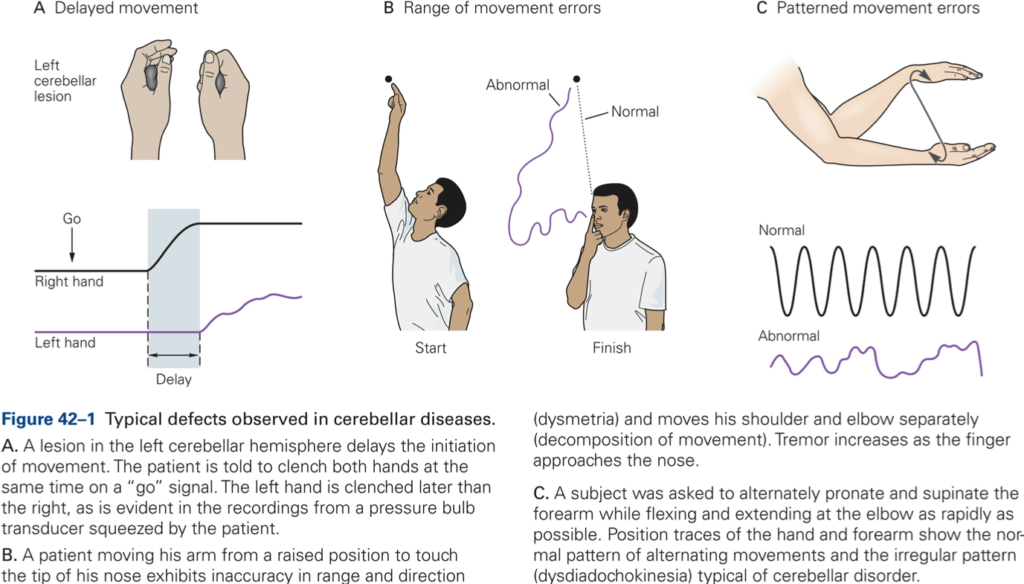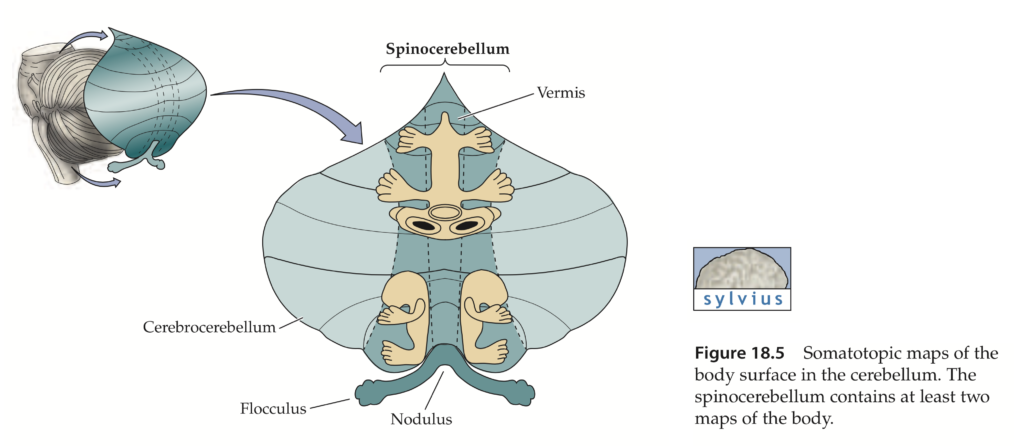M6 | Integrative action of the sensorimotor system – Cerebellum & Basal ganglia
Clinical Signs of Cerebellar Damage

Ataxia
Syndrome characterized by a breakdown of movement coordination and inaccuracies when reaching for a visual target. Ataxia includes:
- Dysmetria (inaccurate movement amplitudes)
- Asynergia (poor coordination between joints, decomposition of movement)
- Intention tremor
- Dysdiadochokinesia (inability to perform rapidly alternating movements smoothly)
- Hypotonia and pendular knee jerks.
Localization of function (somatotopic organization)
Lesions in intermediate and lateral CB give rise to ataxia of individual limbs; lesions in medial CB results in poor equilibrium and falling, ataxia of gait (walking).

CB damage prevents modification and adaptation of behaviors, that is, it has a function in motor learning.
References
- Voogd, J., & Glickstein, M. (1998). The anatomy of the cerebellum. Trends in Neurosciences., 21(9), 370-375. [PDF]
- Glickstein, M. (2000). How are visual areas of the brain connected to motor areas for the sensory guidance of movement? Trends in Neurosciences., 23(12), 613-617. [PDF]
- Glickstein, M. (2007). What does the cerebellum really do? Current Biology, 17(19), R824-827. [PDF]

